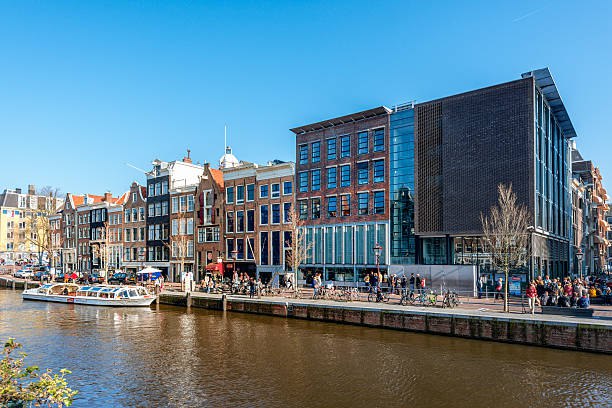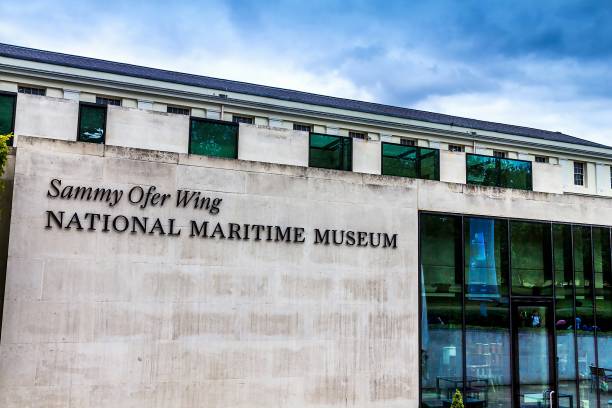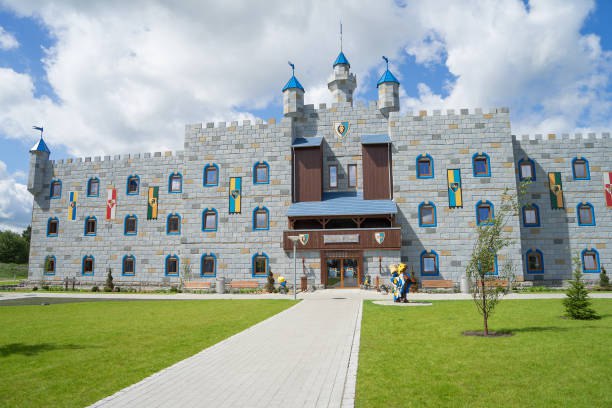Amsterdam, a city renowned for its picturesque canals, renowned museums, and vibrant cultural scene, is also home to a deeply moving chapter of history. The Anne Frank House, located in the heart of the city, offers visitors a chance to connect with the past, reflect on the human spirit's resilience, and better understand the harrowing experiences of Anne Frank. A young Jewish girl whose diary has become one of the most impactful books of the 20th century, Anne’s story continues to resonate across the world. Here’s what you can expect when visiting this iconic landmark in Amsterdam.
The Anne Frank House: A Historical Overview
Located at Prinsengracht 263, along Amsterdam’s famous canals, the Anne Frank House is the very place where Anne, her family, and four other Jewish refugees hid from the Nazis during World War II. From 1942 to 1944, they lived in concealed rooms behind a secret bookcase in a building owned by Anne’s father, Otto Frank.
Anne Frank’s diary, The Diary of a Young Girl, offers a poignant, deeply personal look at her life in hiding, capturing her thoughts, emotions, and the challenges she faced. Tragically, Anne died in the Bergen-Belsen concentration camp in 1945, mere weeks before the war’s end. Yet, her words continue to impact readers and serve as a powerful reminder of the atrocities of the Holocaust.
A Step Back in Time: What You’ll Experience at the Anne Frank House
Today, the Anne Frank House stands as a museum, bringing Anne’s story and the experiences of others affected by the Holocaust to life. Visitors can explore the rooms where Anne and her family hid, each space rich with historical artifacts and personal mementos that offer insight into their lives.
The Secret Annex
The heart of the museum is the Secret Annex, the hidden rooms behind a movable bookcase where Anne and her family spent over two years in hiding. These rooms have been preserved largely as they were during their time in hiding. You’ll find modest furniture, photographs, and even excerpts from Anne’s diary, all of which help tell the story of the strength and resilience of those who lived there.
Exhibits on the Holocaust and World War II
The museum also features extensive exhibits detailing the Holocaust, the persecution of Jews during World War II, and the broader historical context. These exhibitions explore important themes such as prejudice, discrimination, and human rights, offering visitors a chance to reflect on Anne’s legacy and the lessons history has to teach us.
Anne’s Diary and Lasting Legacy
A major part of the museum focuses on Anne Frank’s diary and the extraordinary impact it has had since its publication. Visitors can learn how the diary was published after the war, becoming a symbol of hope, inspiration, and a stark reminder of the horrors of the Holocaust. There are also video interviews with Anne’s surviving family members and those who have worked to preserve her story and legacy.
Tips for Your Visit
Book Your Tickets Early
Due to its popularity, the Anne Frank House can be crowded, especially during peak tourist seasons. To avoid long wait times, it’s advisable to book your tickets online in advance. Ticket prices typically range from €14 for adults to €1 for children under 10, with discounts available for students.
Timing Your Visit
The museum is open daily, with extended hours in the summer. A typical visit lasts between 60 and 90 minutes, but it’s recommended to allow extra time to fully explore the exhibits and absorb the emotional weight of the site. The experience can be deeply moving, so be prepared for moments of reflection.
Respectful Atmosphere
The Anne Frank House is a place of solemn reflection. While it’s a popular tourist destination, it’s important to approach the visit with respect for the memory of those who suffered during the Holocaust. Keep voices quiet, refrain from using flash photography, and take time to contemplate the significance of the space.
Things to Do Around the Anne Frank House
While you’re in the vicinity, there are several other attractions to explore in Amsterdam:
- Westerkerk: Located just next to the Anne Frank House, this historic 17th-century church offers breathtaking views of the city from its tower.
- Amsterdam Canal Tour: A canal cruise is the perfect way to experience Amsterdam’s scenic waterways and admire the city from a different vantage point.
- Rijksmuseum: A short stroll away, the Rijksmuseum showcases an impressive collection of Dutch art and history, including masterpieces by Rembrandt and Vermeer.
Why the Anne Frank House is a Must-Visit
A visit to the Anne Frank House is more than just a historical tour—it’s a journey into the past, encouraging visitors to reflect on the values of tolerance, freedom, and standing up against injustice. Anne’s story serves as a powerful reminder that even in the darkest times, hope, courage, and humanity can endure. Whether you’re a history enthusiast or simply seeking a meaningful experience, the Anne Frank House is an essential stop during your trip to Amsterdam. By visiting, you pay tribute to Anne Frank and millions of others who suffered during the Holocaust, ensuring their stories are never forgotten.
Discover more about the Anne Frank House by visiting: skyroutetravel.com

 India
India
 Sri Lanka
Sri Lanka




0 comments for this post